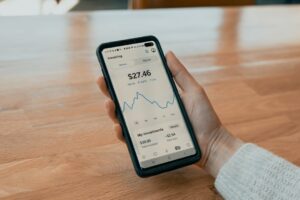How to Deal with Slippage in Forex Trading: Tips and Strategies for Success
Forex trading is a fast-paced and dynamic market, where traders aim to make profits by buying and selling currencies. However, one common challenge that traders often face is slippage. Slippage occurs when there is a difference between the expected price of a trade and the actual price at which the trade is executed. This can have a significant impact on a trader’s profitability, and thus it is important to understand how to deal with slippage effectively.
Understanding Slippage
Slippage can occur in both directions, either positive or negative. Positive slippage occurs when a trade is executed at a better price than expected, resulting in additional profits for the trader. On the other hand, negative slippage occurs when a trade is executed at a worse price than expected, resulting in potential losses.
Slippage is primarily caused by market volatility and liquidity. During periods of high volatility or low liquidity, it can be more challenging for trades to be executed at the desired price. This is especially true for large orders, where the market may not have enough liquidity to fill the order at the desired price.
Tips for Dealing with Slippage
1. Use Limit Orders: One effective way to minimize slippage is to use limit orders instead of market orders. A limit order allows you to specify the exact price at which you want to enter or exit a trade. By setting a limit order, you can ensure that your trades are executed at the desired price or better. However, it is important to note that limit orders may not always be filled if the market does not reach the specified price.
2. Avoid Trading during High-Impact News Releases: High-impact news releases, such as interest rate decisions or employment reports, can significantly increase market volatility and liquidity. During these periods, slippage is more likely to occur. To minimize the risk of slippage, it is advisable to avoid trading during these high-impact news releases or to use appropriate risk management strategies.
3. Monitor Market Conditions: It is crucial to stay informed about market conditions and be aware of any potential events or factors that could impact volatility and liquidity. By staying updated, you can anticipate periods of high volatility and adjust your trading strategies accordingly. This can help you avoid slippage or take advantage of potential opportunities that arise during such periods.
4. Use Stop Loss Orders: Stop loss orders are essential risk management tools that help limit potential losses. By setting a stop loss order, you can automatically close a trade at a specific price level to minimize losses. While stop loss orders do not guarantee protection against slippage, they can help limit the impact of negative slippage on your trades.
Strategies for Dealing with Slippage
1. Trade with Reputable Brokers: Choosing a reliable and reputable forex broker is vital to minimize the risk of slippage. It is recommended to select a broker that has a strong track record and is known for providing fair and transparent trading conditions. Additionally, brokers that offer deep liquidity and fast execution speeds can help reduce the likelihood of slippage.
2. Diversify Your Trading: Diversifying your trading across different currency pairs and timeframes can help reduce the impact of slippage. By spreading your trades across various markets, you are less likely to be affected by slippage in a single currency pair or during specific trading sessions.
3. Implement Slippage Protection Tools: Some forex brokers offer slippage protection tools that can help minimize the impact of slippage on your trades. These tools allow you to set a maximum deviation from the desired price, ensuring that your trades are executed within a specified range. However, it is important to understand that these tools may not completely eliminate slippage, but rather provide an additional layer of protection.
In conclusion, slippage is a common challenge in forex trading that can impact a trader’s profitability. By understanding the causes of slippage and implementing effective strategies, traders can minimize its impact and increase their chances of success. Utilizing limit orders, avoiding trading during high-impact news releases, monitoring market conditions, and using stop loss orders are essential tips for dealing with slippage. Additionally, trading with reputable brokers, diversifying your trading, and utilizing slippage protection tools can further enhance your ability to manage slippage effectively.





